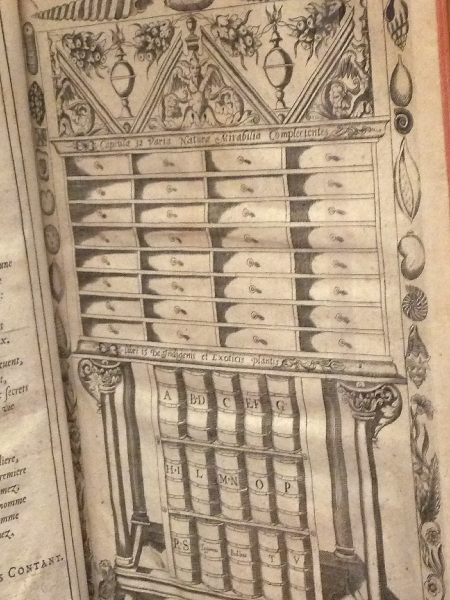The Art Librarians strike again. No wonder there’s a Librarian Action Figure.
They are always on the go.
Tonight to the Grolier Club to see the Wunderkammer catalogue exhibit. The Grolier Club was started in 1884 by nine people to promote books and book arts through exhibitions and publications. Interesting in our digital book world, the Grolier Club now has 800 members — collectors, dealers, antiquarians, librarians, fine artists, plus. And not just in New York. About 20% of members today are women, after the club gave in and admitted us beginning in 1976.
It’s in its third home, a townhome built by an architect-member in 1917, on 60th between Madison and Park. The exhibits are open to the public, and if you like rare books, the exhibits at the club are worth a visit.
Wunderkammers are rooms of wondrous things: things of beauty, things of rarity, and things of artistic, scholarly, or financial value. The exhibit features proud owners’ catalogues of their surprising objects from 1599 to 1899. 
You can click on this image to make it larger, to see what a Wunderkammer in 1599 looked like. As time progressed, Wunderkammers also became cabinets like this one below, for displaying art and natural science wonders.
The exhibition includes a 16th century how-to manual for making your own Wunderkammer. People did it all different kinds of ways.
A Dutch apothecary traded medicines for curiosities that sailors collected on their voyages for the Dutch East India Company. Check out some of the oddities that the owner cataloged in this “sea book” and below in the slide show.
Famous people had Wunderkammers, including Peter the Great, who collected curiosities and put them in jars. We saw these jars in a catalogue, on the whole second floor of the palace. He also had one of his 7′ tall guards stuffed after his death. Hmmm.
Entertainers like P.T. Barnum made museums out of a collection of curios. In the same tradition as Charles Willson Peale, who started the first U.S. museum in Philadelphia in today’s Independence Hall, Barnum displayed natural history and other wonders, as well as art.
Wunderkammers, as a 300 year fad, were not just created in Europe. Here’s a Japanese cataloged record of fossils, minerals, and stones. Pretty, eh?
So think about cataloging your own wonders. Who knows, your record could end up in the Grolier Club!




